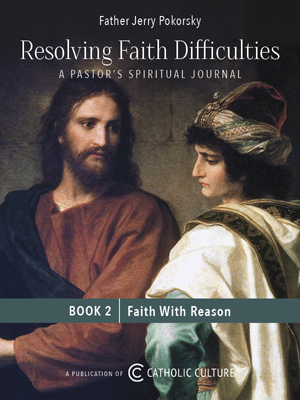Catholic Recipe: Sally Lunns
Also Called: Tea Time Treat
SALLY LUNN, according to legend, was born and reared in the city of Bath, England, where, in the 1790's, she sold hot tea buns. Some claim Sally was the original maker and inventor of the cakes that bear her name; others that she had a tea shop of her own. But the most common version of the story is that Sally piled her buns high in a basket, covered them with a linen cloth, and hawked them up and down the streets of the fashionable old watering town.
One day a baker named Dalmer observed that the rich and pampered residents of Bath always bought Sally's cakes. Dalmer, who was a shrewd tradesman, soon realized that here was the germ of a fine business, based on a fine product and a popular personality. So the baker bought out the huckster, named her cakes "Sally Lunns," and-being something of a rhymester and musician as well as a baker-wrote a song about her. The song became popular. Before long everyone in Bath, from butcher boys to gouty old lords who had come for a cure, was humming the new tune. Soon Dalmer's business became so large he needed special barrows to distribute his wares.
Sally Lunns were the sensation of the moment. History says Dalmer rolled up a neat fortune, and a few years later he retired. Regrettably, there is no further mention of Sally. We only hope that her charm and personality won a rich and appreciative husband who doted on Sally and liked hot cakes for tea.
Sally Lunns were the fashion of eighteenth- and nineteenth- century England and their popularity has never entirely waned. English literature abounds in allusions to them. One of the earliest appeared in the Gentleman's Magazine for 1798 and refers to "a certain sort of hot rolls now, or not long ago, in vogue at Bath . . . gratefully and emphatically styled 'Sally Lunns.'"
Both Carlyle and Dickens-who evidently ate Sally Lunns with relish-mention them in their writings. "Robinson gives me coffee and Sally Lunns," writes Carlyle, while Charles Dickens says in The Chimes, "It's a sort of night that's meant for muffins. Likewise crumpets. Also, Sally Lunns." Thackeray must have associated the small buns with intimate moments because, in Pendennis, he describes "a meal of green tea, scandal, hot Sally Lunns, and a little novel reading."
Sally Lunns were in such demand in England that the recipe was brought to America. The early formulas differed vastly from modern recipes. One cookbook, for example, directed the housewife to stir together a half pint of milk, a pound of flour, two eggs, a teaspoon of sugar, an ounce of butter, a teaspoon of salt, and a gill of yeast. She was to set the sponge at night and bake it next morning in a pound cake mold. And if, by mischance, the dough turned sour, the recipe advised the housewife to mix in a teaspoon of soda, dissolved in a little sour milk.
Luckily, today's recipe for Sally Lunns is foolproof and, when followed exactly, leaves nothing to chance.
DIRECTIONS
Add butter, sugar, and salt to the scalded milk. When the mixture is lukewarm, add the yeast which has been dissolved in warm water. Add the beaten eggs. Gradually add the flour, beating after each addition so the dough will be smooth. Let rise in greased covered pan until light. Fill greased muffin tins 2/3 full and let rise about 60 minutes. Bake about 10 minutes in hot oven (400 degrees F.).
Recipe Source: Feast-Day Cakes from Many Lands by Dorothy Gladys Spicer, Holt, Rinehart and Winston, 1960






